Addendum
Back to the drawing board at THAI
April 1st 2017
Thai Airways International’s (THAI) continues to flounder. The flag carrier’s board was scheduled to debate the structure of the new THAI Group – THAI itself and part-owned subsidiaries, Nok Air and THAI Smile - at its March board meeting, but the plan fell of the agenda because “several parties” did not fully understand the issue, the airline said. Read More »
Instead, THAI chairman, Areepong Bhoocha-Oom, instructed THAI’s acting president, Usanee Sangsingkeo, to write a detailed plan of the proposal for THAI board directors, a task that is expected to take at least a month.
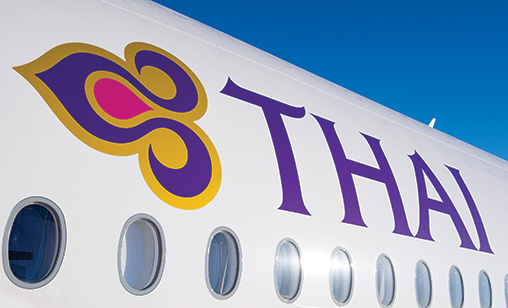 |
THAI must act swiftly to avoid returning to the red. It reported a $375 million net loss in 2015 but scraped home last year with a profit of $431,000, largely achieved by a 28% cut in fuel costs. THAI carried 4.8% more passengers in 2016, but operating revenue fell 4.3% and passenger yields declined by 4.5%.
THAI sees a strategic overhaul of its operations, including its two affiliates, as critical to strengthening its position. Areepong said the THAI Group was a concept that would allow the three airlines to compete more efficiently by working closer together.
THAI and THAI Smile have improved synchronization of their operations. THAI Smile has relocated to Suvarnabhumi airport from Don Mueang which has improved connections between the two carriers.
But Nok Air, 39%-owned by THAI, is proving to be a problem child. It was the only airline in Thailand to lose money last year. It reported a record deficit of $94.6 million, up from $47.9 million 12 months earlier. Nevertheless, the THAI board has approved the purchase of more equity in listed Nok, although the sale cannot proceed until the budget carrier’s shareholders have been consulted.
Media reports constantly speculate that when THAI increases its holding in Nok it will replace its boss, the well-connected Patee Sarasin. Areepong has declined to comment either way on the subject, while Patee has told the Bangkok Post that rather than worrying about rumours of his imminent demise he was preoccupied with turning around the airline.
“I can’t just jump ship, I’m responsible for getting Nok Air back in the black by ensuring the recovery plan is properly executed,” said the 55-year-old, who has led the airline since its founding 13 years ago. “I will stay on as long as needed, though I’ve never thought I was indispensable at Nok Air,” he said.
The cost-cutting program would improve yields and revenue and take Nok to break even by year end and to profit for fiscal 2018, Sarasin said. The turnaround will be supported by a $43.3 million capital injection in the airline in the next few months, he said.
Nok, with a fleet of 22 B737-800s, eight Bombardier Q400s turboprops and two ATR 72-500 turboprops, is shedding capacity. It took delivery of five new aircraft last year, three B737-800s and two Q400s, which resulted in too many seats in a highly competitive market. The airline has sold some of its B737-800s to Indian LCC, SpiceJet.
The Don Mueag-based carrier will launch Bangkok-Phnom Penh in October and debut regular services to several Indian cities in the next 12 months. Patee said the Chinese market will be critical to improving yields. It will launch six China destinations in 2017: Phuket-Chengdu, Chiang Mai-Nanjing, Phuket-Nanjing, Bangkok-Nanning, Bangkok-Linyi and Phuket-Wuhan.
Sarasin and three top Nok executives have cut their salaries by 25% to demonstrate they embraced the restructuring program. “That does not really mean much in terms of reducing cost, but we wanted to send out a clear message that we’re responsible for past financial performance,” he said. By Tom Ballantyne
Tarnished Thailand spends big on aviation revamp
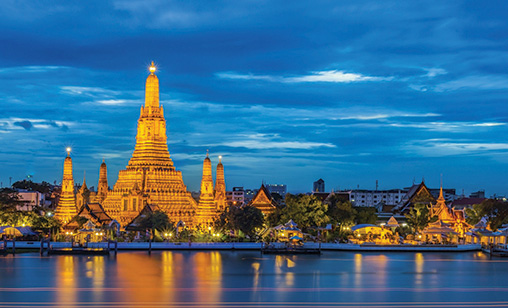 |
Thailand’s military junta has announced a multi-billion dollar aviation reform program that includes massive investment in airports, maintenance, repair and overhaul (MRO) facilities and the development of a reputable air safety regulatory regime.
Top of the junta’s list is a $11.59 billion investment in airport development that is intended to increase annual passenger air traffic in Thailand from 130 million travelers now to 277 million by 2027.
If successful, the reforms would increase passengers processed at Bangkok’s main international airport, Suvarnabhumi, from 45 million a year to 90 million annually in the next decade.
Under the revitalization plan, the city’s second airport, Don Mueang would increase passenger throughput to 40 million passengers a year from 30 million and U-Tapao airport would expand capacity from three million annually to 30 million a year.
The investment program also would spend $2.5 billion to upgrade 10 regional and 26 secondary city airports across Thailand.
Intended to restore Thailand to its former status as a regional aviation hub, the project is vital to the country’s economic growth, said Kobsak Pootrakul, vice minister in the office of Thailand’s prime minister.
Several factors have slowed aviation expansion in Thailand, but chief among them was the downgrading of the country’s air safety regulatory standing by the International Civil Aviation Organisation almost two years ago.
The ICAO red flagging of Thai aviation safety oversight damaged the country’s standing worldwide, a blow that was exacerbated by a crackdown on scams committed on Chinese tourist groups, one of Thailand’s primary passenger markets. Tourism receipts account for about 10% of GDP.
Despite the damaging reputational issues, Thailand attracted 32.6 million foreign tourists last year with the numbers forecast to increase to 34-35 million this year. It intends to reach a target of 53 million visitors a year by 2032.
The government funding package, approved last month, included a public-private partnership (PPP) program for 11 airports: Phrae, Mae Hong Son, Mae Sariang in Mae Hong Son, Tak, Phetchabun, Hua Hin, Nakhon Ratchasima, Pattani, Betong, Chumphon and U-tapao.
Caps on foreign direct investment into Thailand have been lifted to allow non-Thai companies to run the nation’s airports and hold equity of more than 51% in new MRO facilities. Thai Airways International (THAI) is scheduled to sign a Memorandum of Understanding with Airbus in August to establish a commercial MRO centre at U-tapao airport, which is planned to be operating within three years.
Kobsak also said the government wanted annual freight business to achieve a target of 3 million tonnes a year from 1.3 million tonnes at present. By Tom Ballantyne
Qatar to change tactics in India?
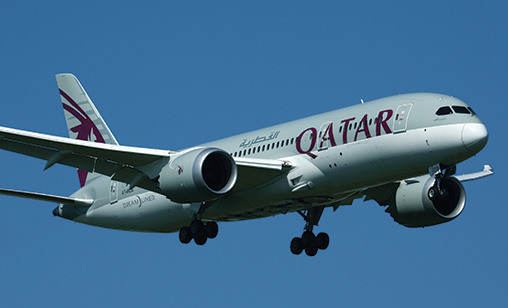 |
India’s crowded skies could become more crowded if Qatar Airways genuinely intends to establish a domestic carrier on the subcontinent.
The big three Gulf carriers have thrown a lot of capacity on to Indian routes, but Qatar Airways said in March it planned to go one better by setting up a Qatari-controlled domestic airline in India.
Qatar Airways boss, Akbar al Baker, whose airline is a member of the oneworld alliance, said in Berlin last month that the alliance’s partners would soon be making an application to that effect.
“And from there we will proceed. Yes, we will have a 100%-owned domestic carrier in India that will belong to both Qatar Airways and our state investment arm as India now allows foreign direct investment in domestic carriers within India.” He said the proposed carrier eventually would have a fleet of 100 aircraft.
If the Indian government approves the application, the new carrier would be the first 100% foreign owned airline to fly India’s skies. Prime Minister Narendra Modi’s government opened the sector to 100% foreign direct ownership (FDI) last June, although a foreign airline is limited to a 49% holding. It is expected Qatar Airways will hold 49% and the investment company 51%.
Al Baker’s announcement is the latest strike from Gulf carriers looking for market share in the world’s fastest growing domestic airline market. Dubai’s Emirates Airline has the largest number of bilateral traffic rights to India and Abu Dhabi-based Etihad Airways and its strategic Indian partner, Jet Airways, carries the largest number of international passengers out of the country. Etihad owns 24% of Jet, a relationship that facilitates significant access to Indian domestic passengers transiting to international routes.
By starting its own domestic airline, Qatar would challenge that network strength. Al Baker has never made a secret of his carrier’s ambitions in India. He has talked about acquiring equity in LCC, IndiGo, but apparently this came to nothing.
He also has aggressively argued there should be Open Skies or unlimited flying rights between India and the Gulf, where vast numbers of Indians are employed. Qatar and India operate under a traditional bilateral air service agreement where airlines from both countries can operate a stipulated, equal number of flights.
It is too early to predict if Qatar will succeed in setting up a subsidiary carrier in India. While regulations to allow 100% FDI in the country’s airlines haves been approved, rules still exist that state substantial ownership and effective control (SOEC) needs to rest with an Indian entity in the country’s aviation industry.
Modi’s government has not announced any modifications to that rule, even after it approved 100% FDI in airlines. So, before Qatar receives the go-ahead for its venture the new regulatory framework must be clarified – and in India things seldom move fast. By Tom Ballantyne
Cathay Pacific and China Southern choose new bedfellows
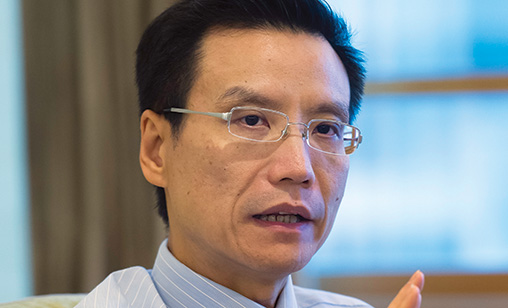 |
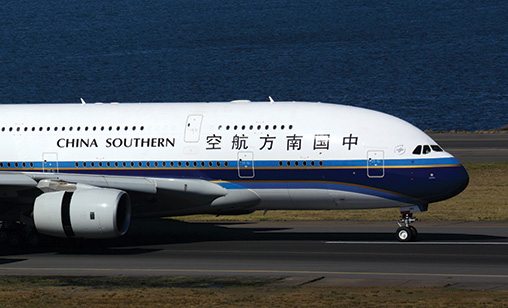 |
Hong Kong’s Cathay Pacific Airways and the Mainland’s China Southern Airlines signed up to relationships with Lufthansa and American Airlines, respectively, in March. At the end of the month, Cathay Pacific chief executive, Ivan Chu, announced the oneworld carrier would code share on flights operated by Star lead member, Lufthansa German Airlines, Swiss and Austrian Airlines.
In return, Lufthansa and its affliates will code share with Cathay from Hong Kong to New Zealand, Cairns, Melbourne and Sydney. The code share agreement will give Cathay Pacific passengers 14 new destinations in Germany, Belgium, Hungary, Norway, Italy and Switzerland.
The agreement extends to the frequent flyer programs of both airlines, including the ability of Cathay’s Marco Polo club members to earn club points on Lufthansa code share flights. Cathay Pacific Cargo and Lufthansa Cargo jointly market their capacity on flights between Hong Kong and Europe with joint shipments from Europe to Hong Kong planned for 2018.
Across the border in Guangzhou, government controlled China Southern Airlines has welcomed privately owned American Airlines into its fold as a minority shareholder. The Texas-headquartered carrier will acquire 8.83%, for US$200 million, of the largest airline in Asia. In the process, China Southern will become the last of the Big Three Mainland airlines to welcome a foreign owner to the share register. Cathay Pacific owns 18% of Air China, and Air China owns almost 30% of Cathay Pacific. Delta Airlines completed its purchase of a minority holding in China Eastern almost two years ago.
In a joint statement, American and China Southern said they expect to begin code share and interline agreements later this year, giving American customers access to 40 destinations beyond Beijing and more than 30 beyond Shanghai. More than 80 destinations beyond San Francisco, Los Angeles and New York will become available to China Southern in the deal.
Mueller to succeed Hogan at Etihad Aviation Group?
The Gulf airline rumour mill has been set spinning by “insider” reports that Christoph Mueller, the Emirates boss of Innovation and a recent CEO of Malaysia Airlines, is on his way to Etihad Airways as James Hogan’s successor. The Etihad Aviation Group president and CEO announced in January that he would retire from the Abu Dhabi headquartered group in the second half of the year, along with CFO, James Rigney. At the time, Hogan said he planned to shift his career gears to finance.
In the announcement issued on January 24, the Etihad Aviation Group chairman, H.E. Mohamed Mubarak Fadhel Al Mazrouei, said he “looked forward to James’ continued association with Abu Dhabi in new ways”.
The chairman also said: “We must ensure the airline is in the right size and shape. We must continue to improve cost efficiency, productivity and revenue. We must progress and adjust our airline equity partnerships even as we remain committed to the strategy.” Its the perfect job for airline corporate doctor Mueller.
Australian and New Zealand airlines form lobby group
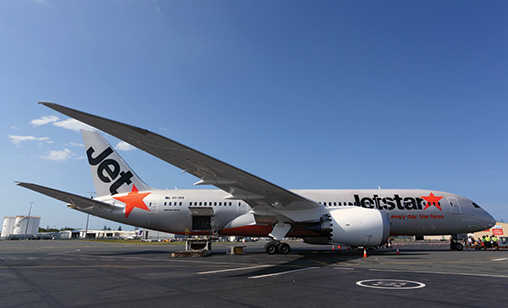 |
A new airline association, Airlines for Australia and New Zealand (A4ANZ), was established last month to advocate public policies for the aviation sector. Areas of focus include taxes, fees and improved infrastructure.
A short time before the association was launched, the Australian Competition and Consumer Commission (ACCC) announced its finding that passengers and airlines have paid in excess of A$1.6 billion (US$1.22 billion) for access to Australian airports in the last ten years.
Former ACCC chairman, Professor Graeme Samuel, will chair the group which is being funded by members Air New Zealand, Jetstar, Regional Express (REX), Qantas, Tigerair Australia and Virgin Australia. The board will be made up of a representative from each member airline. A chief executive will be appointed in coming months.
The Australian and New Zealand governments do not have the jurisdiction to regulate fees and charges as major airports are privately owned.
Sydney Airport CEO quits ahead of second airport decision
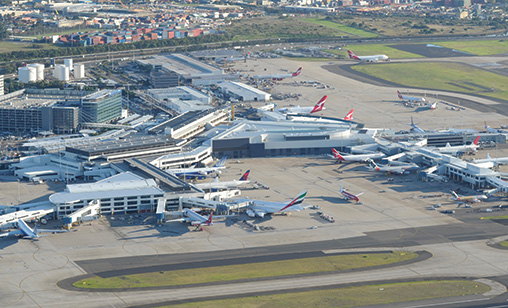 |
Sydney Airport has set about finding a replacement for long-serving CEO, Kerrie Mather, after she put in her resignation to airport owner, Macquarie, on March 27. Mather, who has had a long and successful career at Macquarie took on the Sydney Airport job in 2002. Her decision to depart was made at a crucial time for the investment and finance group.
On May 8, or earlier, Macquarie must inform the government if it will, or will not, take up its option to build Sydney’s second airport at Badgerys Creek in the western heartlands of the city. Influential investors have said it would be uneconomic to build the A$5 billion airport without government assistance.
Mather has been quoted as saying that private development of the second airport without government assistance was “a deeply uneconomic investment proposition”. “It would be decades before you would see reasonable cash flows on a very significant outlay,” she said in a report in the Australian Financial Review. Mather will remain as the airport’s CEO until a replacement has been found.